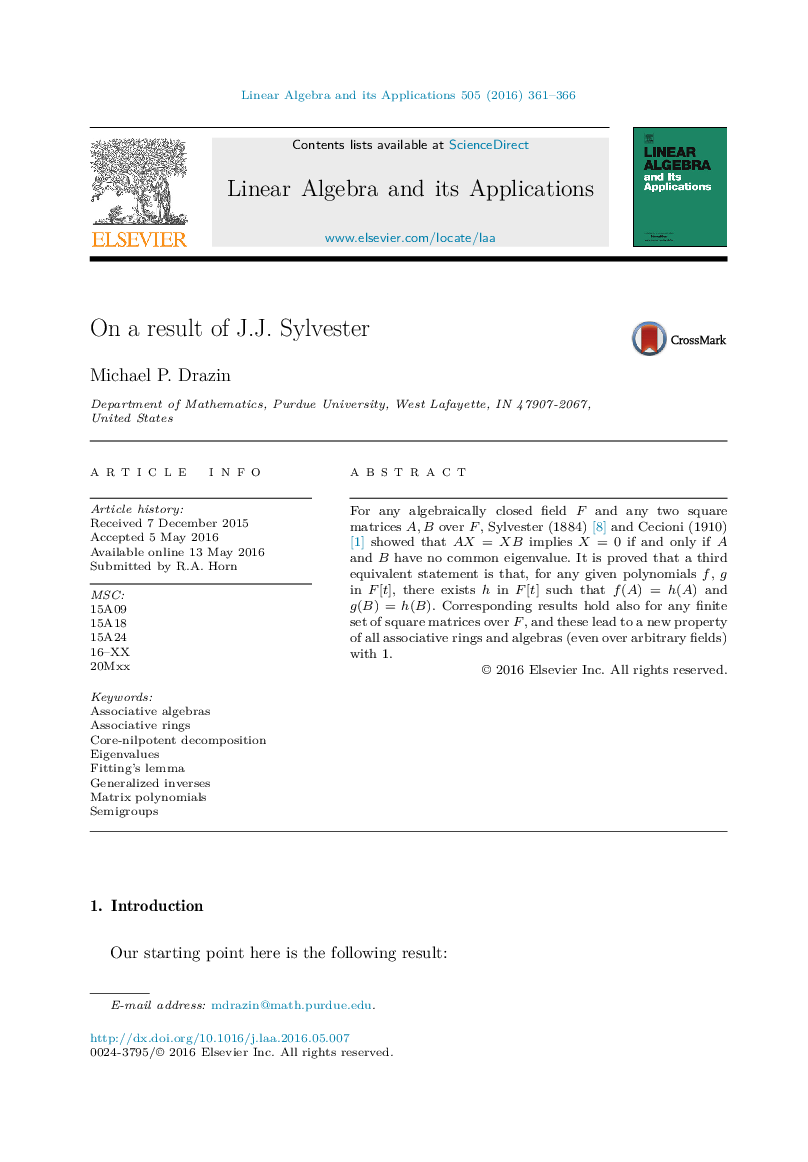| Article ID | Journal | Published Year | Pages | File Type |
|---|---|---|---|---|
| 4598540 | Linear Algebra and its Applications | 2016 | 6 Pages |
Abstract
For any algebraically closed field F and any two square matrices A,BA,B over F, Sylvester (1884) [8] and Cecioni (1910) [1] showed that AX=XBAX=XB implies X=0X=0 if and only if A and B have no common eigenvalue. It is proved that a third equivalent statement is that, for any given polynomials f, g in F[t]F[t], there exists h in F[t]F[t] such that f(A)=h(A)f(A)=h(A) and g(B)=h(B)g(B)=h(B). Corresponding results hold also for any finite set of square matrices over F, and these lead to a new property of all associative rings and algebras (even over arbitrary fields) with 1.
Related Topics
Physical Sciences and Engineering
Mathematics
Algebra and Number Theory
Authors
Michael P. Drazin,
